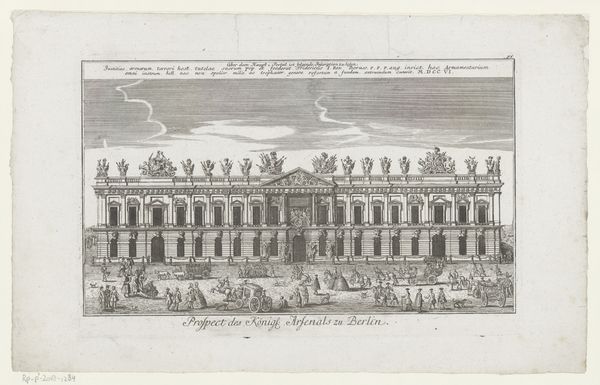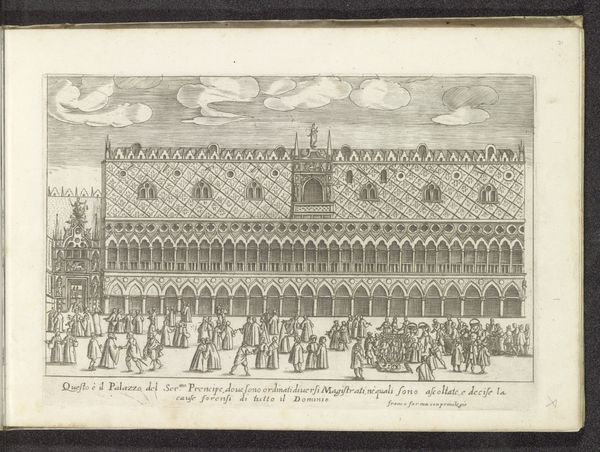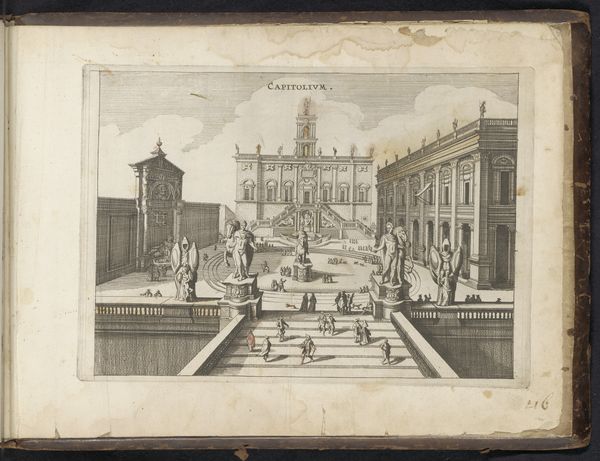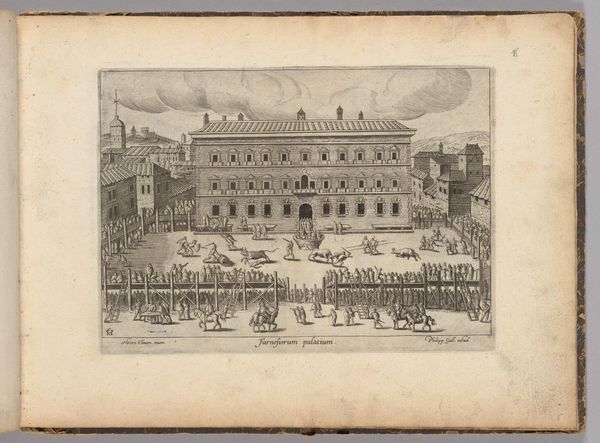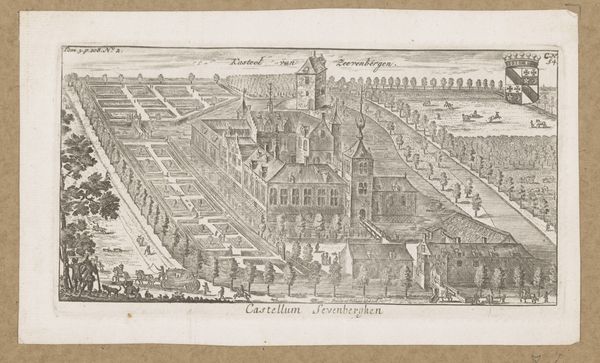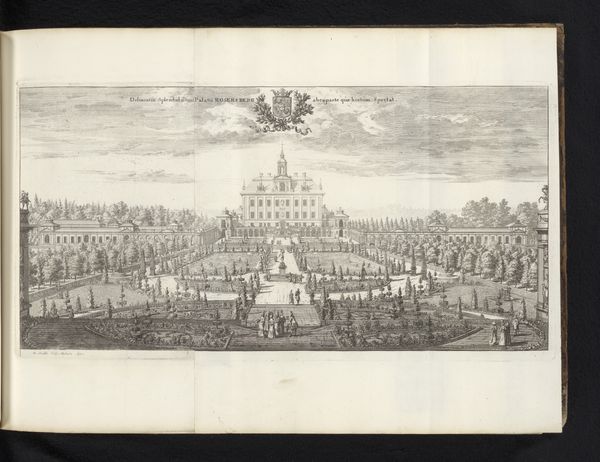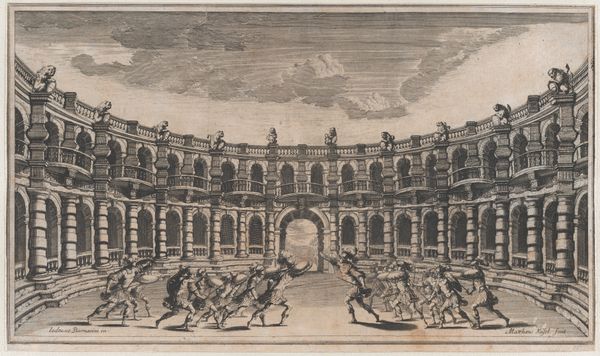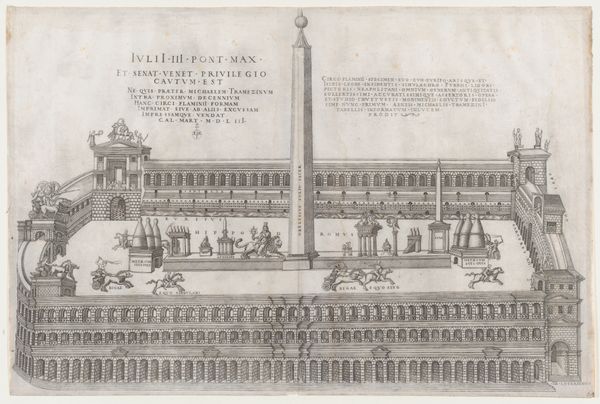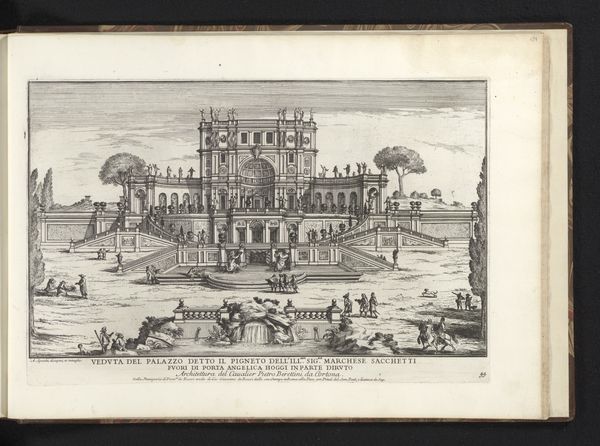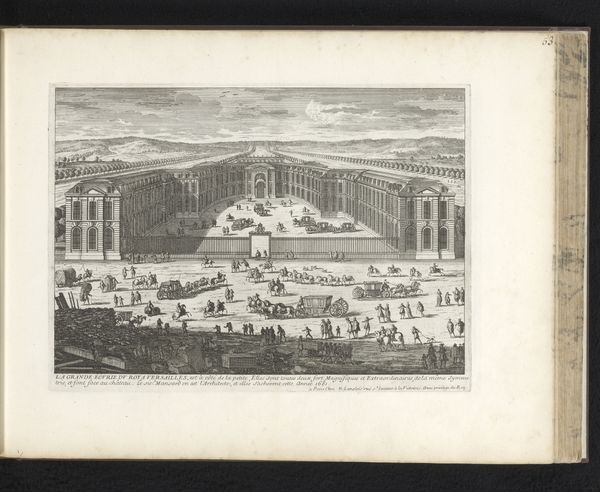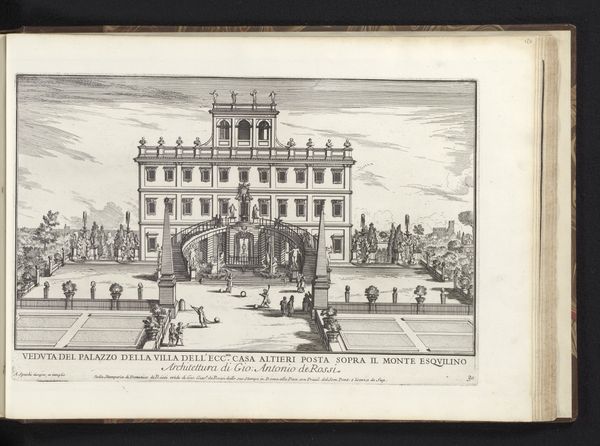
print, engraving, architecture
# print
#
line
#
cityscape
#
italian-renaissance
#
engraving
#
architecture
Dimensions: height 189 mm, width 289 mm
Copyright: Rijks Museum: Open Domain
Curator: So, here we have an engraving, titled "Facade van de Biblioteca Marciana te Venetië," created around 1610 by an anonymous artist. It depicts the facade of the Biblioteca Marciana in Venice. I’m struck by how detailed and almost bustling it feels for a print. What are your initial thoughts? Editor: It's impressive! The level of detail achieved with just lines is incredible. The activity in the square contrasts nicely with the rigid architecture of the Biblioteca. How would you interpret this work through a materialist lens? Curator: Let's think about the labor involved. Engraving was a skilled craft, a trade learned through apprenticeship. Someone meticulously etched these lines into a metal plate. Who was this "anonymous" artist? Their social status is linked to their access to materials and training. And what about the paper itself? Paper production, trade routes, the consumption of printed images – all tie into a wider economic and social context. What purpose did this print serve, and for whom? Editor: Maybe it was a souvenir, a way for wealthy travelers to remember their visit to Venice? Curator: Precisely. These prints weren't just artistic expressions; they were commodities. The Biblioteca Marciana itself represented power and knowledge. Replicated through the relatively accessible medium of print, its image was then distributed, consumed, and perhaps even altered through further reproduction. It’s no longer solely about high art, is it? Editor: I see. The material aspects broaden the narrative. It becomes less about aesthetic beauty and more about the means of production and circulation of images in society. Considering who had access to these engravings, and what messages it sent, I wonder about the patrons involved. Curator: Exactly. It's a chain reaction: from the mines providing the metal for the plate to the distribution networks spreading the image, material considerations provide entry into an understanding of the socio-economic fabric in 17th-century Venice. What did you make of our discussion? Editor: Now, whenever I see prints, I’ll remember it’s more than just an image. It’s about the artist's labor, access to materials, the printing process, the target audience, and ultimately, the distribution of power through imagery. Thanks!
Comments
No comments
Be the first to comment and join the conversation on the ultimate creative platform.
